 W
WHenri Barbusse was a French novelist and a member of the French Communist Party. He was a lifelong friend of Albert Einstein.
 W
WRalph Bates was an English novelist, writer, journalist and political activist. He is best known for his writings on pre–Civil War Spain.
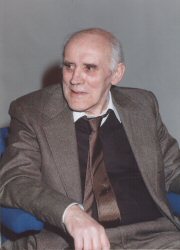 W
WRonald Anthony Berry was a Welsh author of novels and short stories. Born in the Rhondda Valleys where he remained for most his life, his books reflect the working class of the industrial valleys though his vision is more optimistic and there is less concern for politics and religion which was expressed by many of his contemporaries.
 W
WBoy, James Hanley's second novel, first published in 1931 by Boriswood, is a grim story of the brief life and early death of a thirteen year old stowaway from Liverpool. After several editions had been published in 1931 and 1932, a cheap edition, published in 1934, was prosecuted for obscene libel and the publisher heavily fined.
 W
WBread Givers is a 1925 three-volume novel by Jewish-American author Anzia Yezierska; the story of a young girl growing up in an immigrant Jewish household in the Lower East Side of New York City. Her parents are from Poland in the Russian Empire.
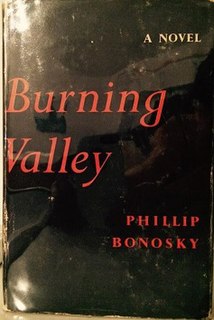 W
WBurning Valley is a 1953 coming-of-age novel by the American writer Phillip Bonosky set in the steel valley of Pittsburgh, Pennsylvania during the 1920s. It was originally published in the Communist Party publication Masses and Mainstream. In 1998 it was reprinted as part of the series "The Radical Novel Reconsidered" by the University of Illinois Press.
 W
WRose Combe, born Marie-Rosalie Bugne, was a French railway worker and writer, viewed as an archetype of Proletarian literature. Born into a poor family, despite receiving little education, she was a voracious reader and memorised one of the few books she had access to, an almanac, by the age of four. She wanted to be a teacher but instead worked for the railway between Ambert and Thiers as a level crossing operator. She continued to write, however, and through the author Henri Pourrat, who lived locally, was first published in 1927. Her work was subsequently printed in L'Auvergne littéraire et artistique and her novel Le Mile des Garre appeared in 1931. She was known as the La Garde-Barrière Auvergnate from her job on the railway. She died in 1932, much of her work still unpublished.
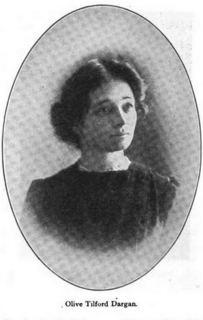 W
WOlive Tilford Dargan was a writer and a poet. Her early works revolved around mountain poetry. Her works like: The Cycle's Rim, Lute and Furrow, Highland Annals were inspired from her love of mountains and nature. Later in her career, she published novels that focuses on racism, sexism, and fascism through her feminist visions of political activism and romanticism. Her most notable works were Call Home the Heart and A Stone Came Rolling which were written as part of her Gastonia novels.
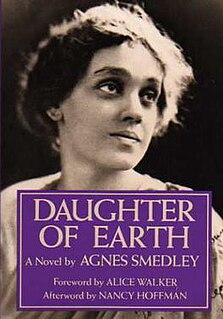 W
WDaughter of Earth (1929) is an autobiographical novel by the American author and journalist Agnes Smedley. The novel chronicles the years of Marie Rogers's tumultuous childhood, struggles in relationships with men, time working with the Socialist Party, and involvement in the Indian independence movement.
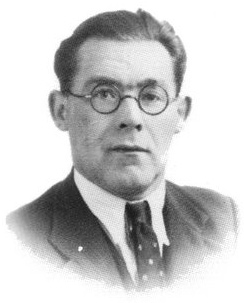 W
WIdris Davies was a Welsh poet. Born in Rhymney, near Merthyr Tydfil in South Wales, he became a poet, originally writing in Welsh, but later writing exclusively in English.
 W
WDocherty is the third novel by William McIlvanney, first published in 1975.
 W
WThe Factory is a proletarian novella written by Japanese author Hiroko Oyamada. Originally written and published in Japan in 2013 by Shinchosha Publishing Co., the book was translated into English by David Boyd and published in 2019 by New Directions Publishing Corporation. The uniquely structured novella switches between the perspectives of three characters as they begin jobs at a joint living and working facility known as "the factory."
 W
WLeon Feraru was a Romanian and American poet, literary historian and translator. Cultivating proletarian literature while frequenting the Symbolist movement, he displayed both his origins in the Romanian Jewish underclass and his appreciation for the wider Romanian culture. He popularized the latter with his work in America, having left in 1913 to escape antisemitic pressures. A translator, publicist, and public lecturer, he was involved with the Romanian press of New York City, and eventually as a Romance studies academic at Columbia and Long Island. Feraru's poetry, collected in two volumes, mixes Romanian patriotism, traditionalist references, and modern industrial aesthetics.
 W
WThe Gilt Kid is the debut novel by British author James Curtis published in 1936. It is a crime thriller set in 1930s London but also deals with working-class themes in a Social realism style.
 W
WThe Girl is a novel by Meridel Le Sueur set during Prohibition and chronicling the development of a young woman from a naive small-town girl into a participant in a bank robbery.
 W
WOtto Gotsche was a German political activist (KPD) and writer. After 1945 he moved into mainstream politics.
 W
WNicomedes Guzmán, was a Chilean writer, editor, poet, and novelist.
 W
WJames (Joseph) Hanley was a British novelist, short story writer, and playwright from Kirkdale, Liverpool, Lancashire, of Irish descent. Hanley came from a seafaring family and spent two years at sea himself, during World War I. He published his first novel Drift in 1930. In the 1930s and 1940s his novels and short stories focussed on seamen and their families, and included Boy (1931), the subject of an obscenity trial. After World War II there was less emphasis on the sea in his works. While frequently praised by critics, Hanley's novels did not sell well. In the late 1950s, 1960s, and early 1970s he wrote plays, mainly for the BBC, for radio and then for television, and also for the theatre. He returned to the novel in the 1970s. His last novel, A Kingdom, was published in 1978, when he was eighty. His brother Gerald was also a novelist.
 W
WYoshiki Hayama was a Japanese author associated with the Japanese proletarian literature movement.
 W
WEthel Carnie Holdsworth, working-class writer, feminist, and socialist activist from Lancashire. Poet, journalist, children's writer and author, Carnie Holdsworth was the first working-class woman in Britain to publish a novel and is a rare example of a female working-class novelist. She published at least ten novels during her lifetime.
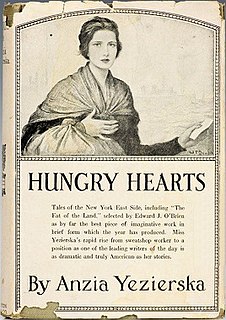 W
WHungry Hearts is a collection of short stories by Jewish/American writer Anzia Yezierska first published in 1920. The short stories deal with the European Jewish immigrant experience from the perspective of fictional female Jews, each story depicting a different aspect of their trials and tribulations in poverty in New York City at the turn of the 20th century. The stories were adapted into a film of the same name.
 W
WIron City is a prison novel by the American writer Lloyd L. Brown based on an actual court case and inspired by the author's experiences as a labor organizer and political prisoner in Pittsburgh, Pennsylvania from 1936 to 1941.
 W
WPanait Istrati was a Romanian working class writer, who wrote in French and Romanian, nicknamed The Maxim Gorky of the Balkans. Istrati appears to be the first Romanian author explicitly depicting a homosexual character in his work.
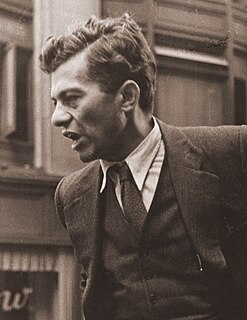 W
WJews without Money is a 1930 semi-autobiographical novel by American critic Mike Gold.
 W
WKani Kōsen is a 1929 novel by Japanese author Takiji Kobayashi.
 W
WJames Kelman is a Scottish novelist, short story writer, playwright and essayist. His novel A Disaffection was shortlisted for the Booker Prize and won the James Tait Black Memorial Prize for Fiction in 1989. Kelman won the 1994 Booker Prize with How Late It Was, How Late. In 1998 Kelman was awarded the Glenfiddich Spirit of Scotland Award. His 2008 novel Kieron Smith, Boy won both of Scotland's principal literary awards: the Saltire Society's Book of the Year and the Scottish Arts Council Book of the Year.
 W
WŌmi Komaki was the pen-name of a scholar and translator of French literature in Taishō and Shōwa period Japan. His real name was Komaki Ōmiya.
 W
WDenji Kuroshima was a Japanese author.
 W
WMeridel Le Sueur was an American writer associated with the proletarian literature movement of the 1930s and 1940s. Born as Meridel Wharton, she assumed the name of her mother's second husband, Arthur Le Sueur, the former Socialist mayor of Minot, North Dakota.
Harold Harwell Lewis was a Communist American poet during the 1930s thru the 1970s.
 W
WLiving is a 1929 novel by English writer Henry Green. It is a work of sharp social observation, documenting the lives of Birmingham factory workers in the interwar boom years. It is considered a modern classic by scholars, and appears on many university syllabi. The language is notable for its deliberate lack of conjunctives to reflect a Birmingham accent. As well, very few articles are used, allegedly to mimic foreign languages that use them infrequently. It is considered a work of Modernist literature.
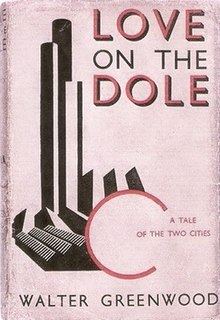 W
WLove on the Dole is a novel by Walter Greenwood, about working class poverty in 1930s Northern England. It has been made into both a play and a film.
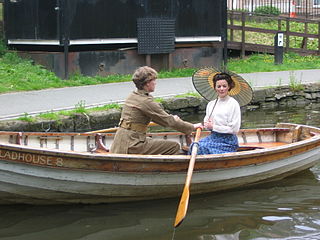 W
WPatrick MacGill was an Irish journalist, poet and novelist, known as "The Navvy Poet" because he had worked as a navvy before he began writing.
 W
WThe Magic Fern is a 1961 novel by the American writer Phillip Bonosky, set in the steel valley of Pittsburgh, Pennsylvania during the 1950s.
 W
WHans Marchwitza was a German writer, proletarian poet, and communist.
 W
WMiyamoto Yuriko was a Japanese novelist, short-story writer, social activist, and literary critic active during the Taishō and early Shōwa periods of Japan. She is best known for her autobiographical fiction and involvement in proletarian and women's liberation movements.
 W
WWilliam John Francis Naughton, or Bill Naughton was an Irish-born British playwright and author, best known for his play Alfie.
 W
WDumitru Theodor Neculuță was a Romanian poet, socialist activist, and artisan shoemaker. Born to a poor family in Western Moldavia, he was not allowed to pursue his passion for music, and worked from an early age. These circumstances instilled him with a desire to combat the established social order of the Romanian Kingdom, driving him into left-wing politics. His interest in music was replaced with a poetic calling: stylistically, Neculuță followed a tradition upheld by Mihai Eminescu and George Coșbuc, which he infused with the tenets of Marxism and his own experience of acute poverty. He wrote for many decades, but was only published from 1894. In parallel, he established his profile as a "poet-activist" for the Social Democratic Workers' Party and its more radically progressive faction, spending his final years as a co-chair of the România Muncitoare in Bucharest.
 W
WMartin Andersen Nexø was a Danish author. He was one of the authors in the Modern Breakthrough movement in Danish art and literature. He was a socialist throughout his life and during the second world war moved to the Soviet Union, and afterwards to Dresden in East Germany.
 W
WHenry Poulaille was a French writer and a pioneer of proletarian literature.
 W
WThe Ragged-Trousered Philanthropists (1914) is a semi-autobiographical novel by the Irish house painter and sign writer Robert Noonan, who wrote the book in his spare time under the pen name Robert Tressell. Published after Tressell's death from tuberculosis in the Liverpool Royal Infirmary in 1911, the novel follows a house painter's efforts to find work in the fictional English town of Mugsborough to stave off the workhouse for himself, his wife and his son. The original title page, drawn by Tressell, carried the subtitle: "Being the story of twelve months in Hell, told by one of the damned, and written down by Robert Tressell."
 W
WSenki was a Japanese proletarian literary magazine in the late 1920s and early 1930s.
 W
WJohn Sommerfield was a British writer and left-wing activist known for his influential novel May Day, which fictionalised a Communist upheaval in 1930s London. Sommerfield volunteered to fight in the Spanish Civil War and wrote one of the first combatant accounts of that conflict. He later served in the Royal Air Force in World War II.
 W
WThe Street is a novel published in 1946 by African-American writer Ann Petry. Set in World War II era Harlem, it centers on the life of Lutie Johnson. Petry's novel is a commentary on the social injustices that confronted her character, Lutie Johnson, as a single black mother in this time period. Lutie is confronted by racism, sexism, and classism on a daily basis in her pursuit of the American dream for herself and her son, Bub. Lutie fully subscribes to the belief that if she follows the adages of Benjamin Franklin by working hard and saving wisely, she will be able to achieve the dream of being financially independent and move from the tenement in which she lives on 116th Street. Franklin is embodied in the text through the character Junto, named after Franklin's secret organization of the same name. It is Junto, through his secret manipulations to possess Lutie sexually, who ultimately leads Lutie to murder Junto's henchman, Boots. Junto represents Petry's deep disillusionment with the cultural myth of the American dream.
 W
WSunao Tokunaga was a Japanese proletarian writer.
 W
WB. Traven was the pen name of a presumably German novelist, whose real name, nationality, date and place of birth and details of biography are all subject to dispute. One of the few certainties about Traven's life is that he lived for years in Mexico, where the majority of his fiction is also set—including The Treasure of the Sierra Madre (1927), the film adaptation of which won three Academy Awards in 1948.
 W
WA World to Win is a novel written by Jack Conroy and published in 1935. It was republished in 2000. This novel, which is set before and during the Great Depression, follows two brothers through their lives both together and separately. One brother, Leo, represents the life of a working man, while the other, Robert, shows the life of a writer, a struggle that Conroy himself dealt with. Despite Robert being determined to be the brother who becomes famous for his writing, he does not. In fact Leo, who never seemed to have a plan, becomes "famous" first when he becomes a wanted man. Although the brothers have led very different lives, they end up together in the end when Robert decides to do something unplanned and free his brother from the police.
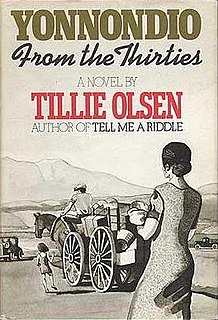 W
WYonnondio: From the Thirties is a novel by American author Tillie Olsen which was published in 1974 but written in the 1930s. The novel details the lives of the Holbrook family, depicting their struggle to survive during the 1920s. Yonnondio explores the life of the working-class family, as well as themes of motherhood, socioeconomic order, and the pre-depression era. The novel was published as an unfinished work.